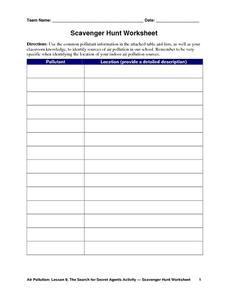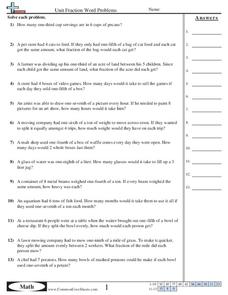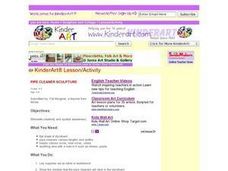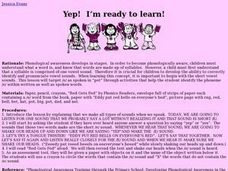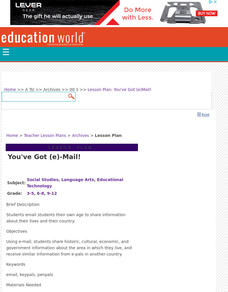Curated OER
Tu o Usted? Explanation and Worksheet 1
What is the difference between using tú or usted? This worksheet provides a thorough, clear explanation, and there's an opportunity to practice. The exercise lists different people and asks the learner to identify whether...
K5 Learning
Addition and Subtraction Word Problems #2
Third graders read nine word problems and decide whether to add or subtract. The problems involve mostly 2-digit addition and subtraction.
WITS Program
Whoever You Are
Deep down, everyone is the same. Discuss the similarities and differences between people across cultures with a series of reading activities based on the beautiful story and illustrations in Whoever You Are by Mem Fox.
Houghton Mifflin Harcourt
A World of Animals: Extra Support Lessons (Theme 10)
Provide extra support with this collection of animal-themed lessons. Early readers gain proficiency in high frequency words are and he, practice blending short vowel sounds, and substitute initial and final phonemes while...
Prestwick House
A Doll’s House
Henrik Ibsen's A Doll's House introduced the novel idea that women are independent people, and that their first duty is truly to themselves. Review the important details of the dramatic play with a short crossword puzzle activity.
Curated OER
Bringing Animal Issues into the Classroom: César Chávez
Fifth graders get critical and political while they begin thinking about human and animal rights in relation to the US Constitution. This hand out includes answers to several questions regarding Cesar Chavez and his work to secure rights...
Curated OER
Internet Fact Hunt at the "Fact Monster" Web Site- Hunt #33
For this Internet fact hunt worksheet, students access the "Fact Monster" web site to locate the answers to 5 multiple choice questions. They answer questions about US history, geography, literature, and science.
Perkins School for the Blind
Conversation Skills
It is so important for learners with multiple disabilities to learn how to communicate for both social and functional reasons. Each child will choose a topic from the list and generate five questions related to that topic. They'll split...
Curated OER
Scavenger Hunt Worksheet
Exactly how environmentally friendly is your school? From the air fresheners in the bathrooms to the cleaning solvents used in the classrooms, young conservationists search the school grounds for sources of air pollution in...
Common Core Sheets
Unit Fraction Word Problems
A set of worksheets prompts learners to practice solving fraction-based word problems. Each problem involves the division of whole numbers by unit fractions. As they work, mathematicians begin to see how division relates...
J. Paul Getty Trust
Expressing Emotions through Art Lesson 1—Everyone Shows They Care
In a instructional activity that explores art and emotions, scholars analyze a piece of art and discuss which emotions it portrays. They go on to reflect on their own emotions and how they are similar to the feelings expressed...
Curated OER
Game Plans
Young scholars consider the online game Neopets as a springboard to developing the characters, settings and plots for online fantasy games. They draft technical plans that describe how their games be presented and played on the We
Curated OER
Pipe Cleaner Sculpture
Learners of any age can make the most out of their pipe cleaners. This art project idea is very simple and yet, it could result in some amazing works of art. They use pipe cleaners, flat styrofoam, straws, pasta, and beads to create...
Curated OER
Yep, I'm Ready to Learn!
Tongue twisters give young learners an easy phrase to refer back to when learning letter sounds. Use the phrase "Eddy put red bells on everyone's bed" to identify the /e/ sound. Then read Red Gets Fed aloud, having learners nod...
Curated OER
Officer Buckle and Gloria
Students write a class letter to a local policeman asking him to come and talk to the class and create a list of safety tips as a class. Students research information on police dogs: type of dogs used, where they come form, how they are...
Curated OER
March Answer Key
In this Easter worksheet, students read a letter to their parents. The 10 words in italics can also be removed in order to create a fill-in-the blank exercise.
Curated OER
Amazing As
Help young readers recognize the short vowel /a/ in written and spoken language. Through matching and listening activities, they discriminate the vowel sound /a/ from other phonemes. Learners associate the phoneme with its letter...
Curated OER
Singing for the Animals
Students examine the correct attitudes and poster for a concert. For this "Singing for Animals" lesson, students created charts to diagram information about the homeless animals they were singing for. Students used correct diction and...
Curated OER
Rain Forest Terrariums
Fifth graders make rain forest terrariums in order to observe a simulated mini-environment. They place the layers and plants into container and place where it can be observed. They observe the closed water system in the container before...
Curated OER
You've Got Email!
Students email students their own age in another country to share information about their cultures and countries.
Curated OER
Literacy Lesson: Guided Reading
Here is a wonderful lesson designed for students with special needs. This well-thought-out lesson uses Big Books, familiar stories, and has a lot of review learning built into it. The book, The Keeping Quilt is used in the main part of...
Curated OER
Personal Narrative Paragraphs: Class Quilt
Begin this activity by asking third graders to bring from home pieces of cloth that represent something important to them. (Have extras for students who need them.) They reflect on important events in their lives, compose narrative...
Curated OER
How to Write an Essay: Secondary ed.
Whether introducing the structure of expository essays or reviewing the format with your high schoolers, take the time to check out this resource. Examples of seven common forms of introductory paragraphs and six types of conclusions, as...
Curated OER
"who Lives in Your House?"
Fourth graders collect data about the people and animals living in their homes, and the students' shoe sizes. They work in groups to enter the information into a database from which they create graphs. They analyze the data to find the...










